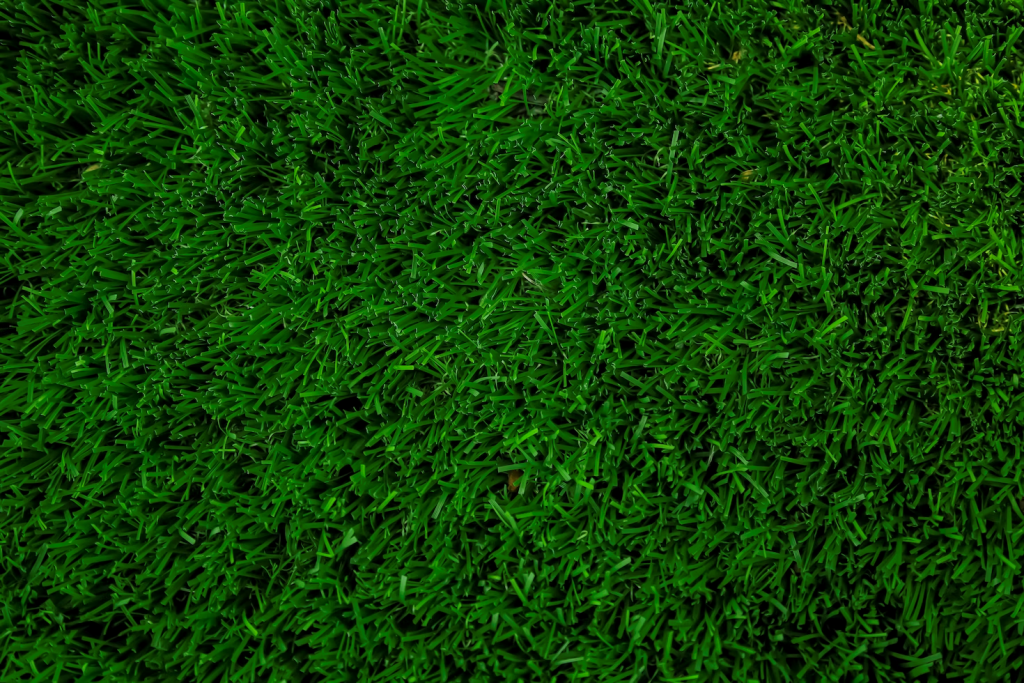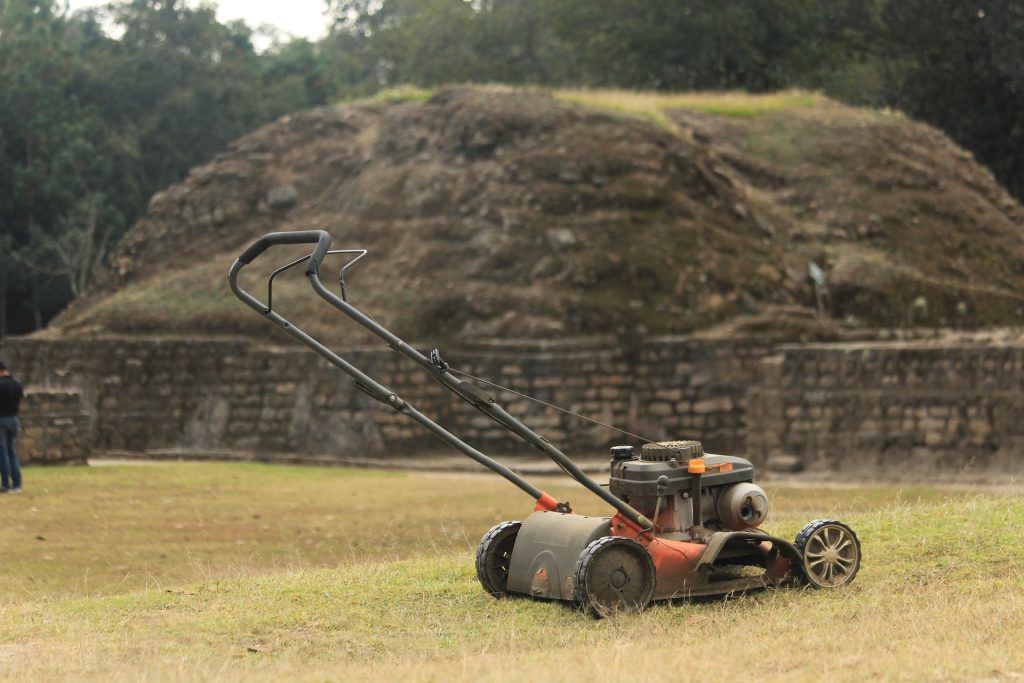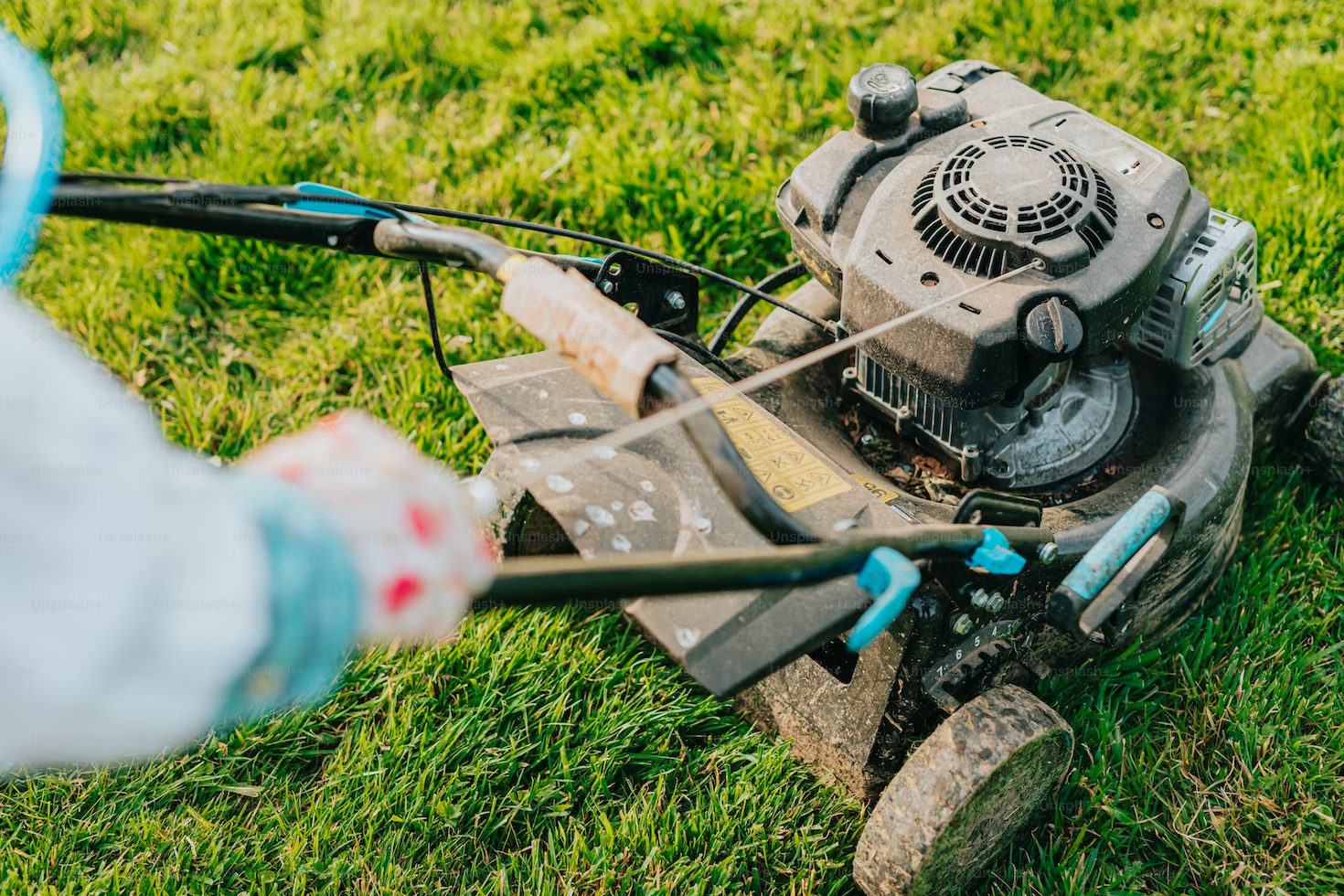Picture this: It’s a sunny Saturday morning, birds are chirping, the grass is green and lush, and it’s finally time to tackle your lawn. But how long will it take you to mow? Whether you’re a seasoned landscape pro or a fresh-faced homeowner, this question can be daunting.
Fear not, fellow lawn enthusiasts! Our handy Mowing Calculator is here to help — type in your variables, and see how long it will take you to mow a lawn of your size!
On average, it takes around 45 minutes to an hour for an average homeowner to push a traditional rotary mower around. But we know you’re nowhere near average. Below, we break down the factors that affect your mow time and share some time-saving tips to get you back to enjoying your yard in no time.
How to Estimate the Time to Mow the Lawn?

To accurately estimate the time required to mow your lawn, consider these four key factors: lawn size, mower size, mowing speed, and lawn conditions.
Let’s dive deeper into each factor:
Lawn Size
“The larger your lawn, the more time it will take to mow” is rather a no-brainer.
To figure out your lawn’s size, measure the length and width of your yard and multiply them together to find the total square footage.
For irregularly shaped lawns, try breaking them down into smaller, more manageable rectangles or squares and add up their areas.
Remember: accurate measurements make a world of difference when estimating mowing time. Grab a tape measure, stride confidently across your yard, and get those numbers!
Mower Size
Not all mowers are created equal. The size of your mower’s cutting deck plays a crucial role in determining how quickly you can finish the job.
A larger deck can cover more ground in a single pass, reducing the number of passes needed, thus ultimately saving you time. Conversely, a smaller cutting deck will take more passes to complete the task.
Typical riding mowers and lawn tractors have cutting decks that range between 36-42 and
42-54 inches, respectively, while professional-grade mowers can go up to 60 inches or more. Make sure you know your mower’s deck size and factor it into your calculations for a more precise estimate.
Also, consider upgrading to a larger mower if you have a sizable lawn and want to save time.
Mowing Speed
Like a seasoned marathon runner, your pace plays a significant role in determining how long it takes to complete the task at hand.
Mowing speed varies depending on the individual and type of mower used — for instance, push mowers require physical effort and may be slower, while self-propelled or riding mowers can zip around with ease.
Average Lawn Mower Speeds:
| Mower Type | Speed, mph |
| Push Mower | 3 |
| Riding Mower | 3-5 |
| Residential Zero-Turn | 5-8 |
| Commercial Zero-Turn | 7-13 |
Now, are you a slow-and-steady tortoise or a speedy hare? To gauge your mowing speed, try timing yourself while mowing a small section of your yard.
However, make sure to consider your own walking speed and familiarity with the equipment when estimating your mowing time. If you’re new to the game or working with an unfamiliar machine, give yourself some extra minutes as you find your groove.
With practice and experience, you’ll eventually increase your speed and efficiency.
Lawn Conditions
Lawn conditions can significantly impact the time it takes to mow.
Is your grass wet, tall, or full of obstacles like rocks, tree roots, and landscaping? These factors can slow you down and make mowing more challenging.
For instance, tall grass takes longer to cut than shorter grass, as you may need to slow down or make multiple passes to achieve an even cut. Similarly, wet grass can be slippery and difficult to navigate, which may increase your mowing time.
Be mindful of obstacles like trees, flower beds, and lawn ornaments that could slow you down or require additional trimming.
Factoring in these hurdles will help you create a more accurate estimate and avoid any unwanted surprises on the mowing day, ultimately streamlining the process.
Time-Saving Mowing Tips

With a better understanding of the factors affecting your mow time, let’s explore some tips to maximize efficiency and get the job done faster:
Maintain Your Mower
A well-maintained mower will run more efficiently and save you precious minutes on the job.
For example, dull blades can tear the grass instead of cutting it cleanly, making your mower work harder and longer. Regularly sharpening your blades ensures a smooth, quick cut.
You should also clean the cutting deck, change the oil, and check your belts. A smooth-running mower will help you tackle your lawn with ease.
Mow in Straight Lines
Mowing in straight lines not only gives your lawn a professional appearance but also saves time by minimizing unnecessary turns and overlaps.
Organize your mowing route in a consistent pattern (such as rows or spirals). Begin by mowing a straight line along the edge of your yard as a guide, then continue parallel to that line while overlapping slightly to ensure even cuts.
This method will keep you on track and help you avoid wasting time with excessive zig-zagging.
Side note: Switch up your mowing pattern every few weeks to promote healthy grass growth and prevent soil compaction from repeated passes over the same area. By varying your approach, you’ll also reduce wear patterns on your lawn and keep it looking fresh.
Plan Your Route
Before hitting the ignition switch, take a moment to survey your yard and plan out an efficient mowing route.
Identify potential obstacles like trees, flower beds, or rocks, and plan how to navigate around them.
Also, take a moment to clear debris before you start. Pick up sticks, leaves, and other debris before mowing to avoid stopping mid-mow to clear obstructions.
Strategizing beforehand will prevent wasted time backtracking or adjusting on-the-fly.
Conclusion
Estimating your mowing time doesn’t have to be a guessing game. With our Mowing Calculator and by considering factors like lawn size, mower size, mowing speed, and lawn conditions, you can confidently tackle your grass-cutting chores with ease.
And by following our time-saving tips, you’ll not only become more efficient but also have more time to enjoy your beautifully maintained outdoor oasis. So go ahead, embrace the art of lawn care, and revel in the satisfaction of a job well done.
Remember, practice makes perfect, and soon you’ll be mowing your way to a beautiful, well-manicured yard that’s the envy of the neighborhood. Happy mowing, and may your weekends be filled with sunshine and freshly cut grass!
Was it helpful?

Enamored with the world of golf Jack pursued a degree in Golf Course Management at THE Ohio State University. This career path allowed him to work on some of the highest profile golf courses in the country! Due to the pandemic, Jack began Inside The Yard as a side hustle that quickly became his main hustle. Since starting the company, Jack has relocated to a homestead in Central Arkansas where he and his wife raise cattle and two little girls.


